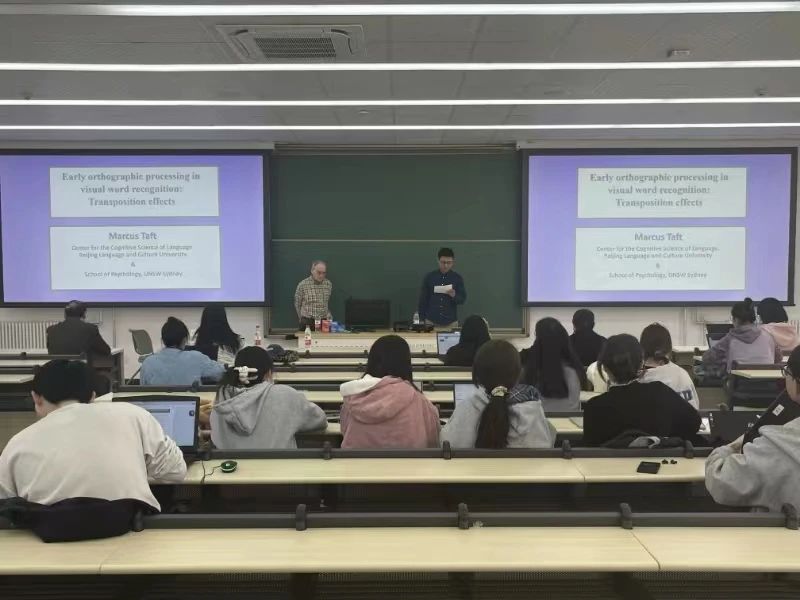On April 3, 2024, Professor Marcus Taft, a specially invited professor of the base, was invited to deliver an academic report to faculty and students of our university. The title of the report was "Early Orthographic Processing in Visual Word Recognition: Transposition Effects." The report was presided over by Dr. He Tao, a full-time research staff member of the base.


Firstly, Professor Taft introduced the simplest model and slot coding of early orthographic processing in visual word recognition, as well as their limitations. Through interactive text reading on the spot and citations of two experimental paradigms and their results, Professor Taft provided a detailed explanation of the transposition effect in alphabetic word recognition. This phenomenon refers to the rearrangement of internal positional information of alphabetic letters without affecting people's cognitive processing of the entire word. He elaborated on two main research effects: the transposed letter interference effect and the transposed letter masked priming effect, as well as three related theoretical explanations: open bigram coding, spatial coding, and imprecise slots. He also summarized the commonalities among these theories.
Secondly, Professor Taft introduced in detail the subsyllabic processing theory (SSP) proposed by him and his collaborators, and compared it with the basic orthographic syllabic structure theory (BOSS) proposed earlier. He also proposed further testing directions for the subsyllabic processing theory.
Finally, Professor Taft pointed out issues that still need further research and explanation in the transposition effect, and highlighted phenomena and problems that need special attention in the study of character transposition effects in Chinese. He emphasized the significance of studying the transposition effect, believing that determining the early orthographic processing mechanisms of each type of script will help teach effective reading strategies to second language learners.
During the Q&A session, Professor Taft provided detailed answers and further discussions to the questions raised by faculty and students. The content of the report was informative and easy to understand, providing profound inspiration to the research ideas of the participating faculty and students, who benefited greatly from it.